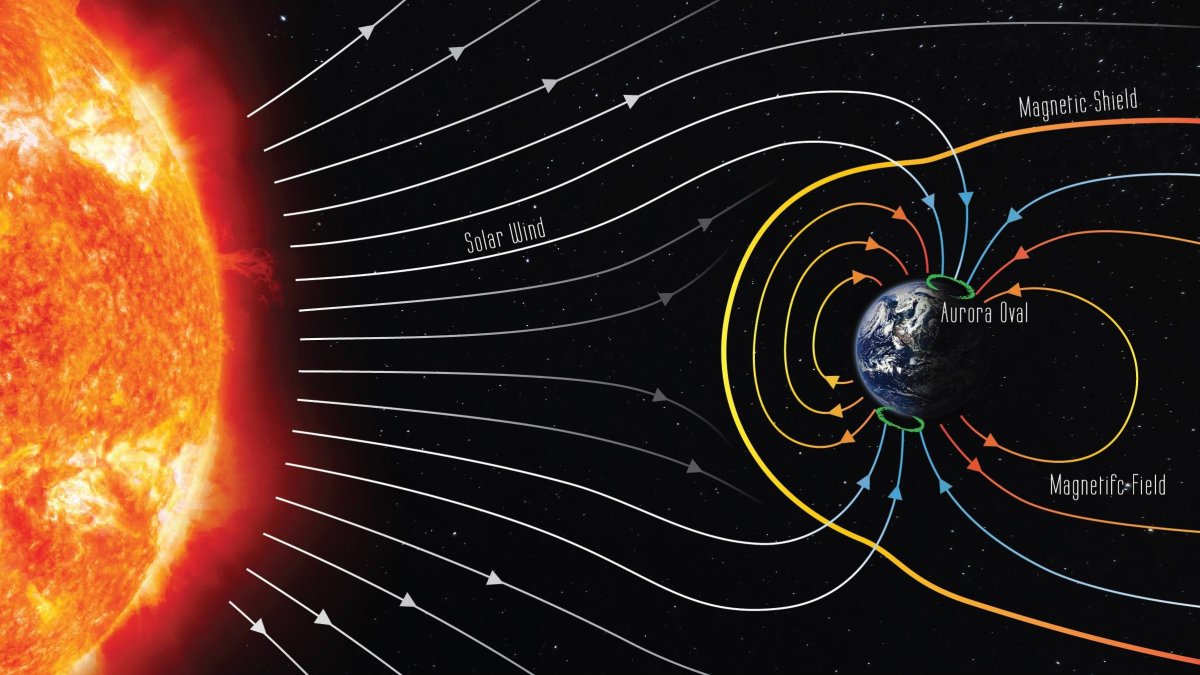Liquid metal churning more than 1,700 miles below the surface governs Earth's mysterious magnetic field. Every now and then the movement of this liquid alters the field. Sometimes it even flips magnetic north and south.
Scientists used to think polarity transitions took thousands of years. But new research published in Proceedings of the National Academy of Sciences shows they can happen much more quickly. And these changes could put our modern infrastructure at risk.

Earth's magnetic field shields us from a barrage of cosmic radiation and solar wind. When the magnetic field shifts it can spell trouble for radio communication, satellites and even electronic power systems. Our ancestors survived at least one full reversal 773,000 years ago, but one has never been witnessed in modern times.
Since then, a number of shorter geomagnetic "excursions" have occurred. These don't permanently switch north and south, but send polarity drifting temporarily—sometimes all the way to reversal.
Researchers use rocks to map our planet's geomagnetic history. In this latest study, a stalagmite from a cave in southwest China helped a team of scientists trace 16,000 years of history—from 107,000 to 91,000 years ago—with multi-decade precision.
The team discovered that 98,000 years ago, Earth underwent a sudden reversal within what may have been just a century. "This change is more than 10 times more rapid than previous estimates for the fastest rate of change, and more than 30 times more rapid than the generally accepted duration for polarity transitions."
The stalagmite also revealed a number of other geomagnetic wanderings. Researchers noticed that when the Earth's magnetic field was weakest, more of certain fluctuations took place. "The duration of these [events] ranged from several centuries to millennia," study author Chuan-Chou Shen explained to Newsweek. "These features indicate prolonged instability of convection in Earth's outer core."

This is pertinent today because the last century has seen our magnetic field weaken by about 10 percent. That doesn't mean our communications are about to drop or our satellites are about to fail. But it does highlight how much scientists have to learn about what could one day be a real danger to the infrastructure we rely on.
Although the research is a big step forward, many questions remain unanswered. This is a point raised by Shen, who is a distinguished professor at National Taiwan University. "What is the exact mechanism for [these] polarity oscillations? Do they occur more often or were they unique to the studied time period?" More rocks and more research, he added, are needed to unlock the workings of the deep-Earth dynamo.
Uncommon Knowledge
Newsweek is committed to challenging conventional wisdom and finding connections in the search for common ground.
Newsweek is committed to challenging conventional wisdom and finding connections in the search for common ground.
About the writer
Katherine Hignett is a reporter based in London. She currently covers current affairs, health and science. Prior to joining Newsweek ... Read more
To read how Newsweek uses AI as a newsroom tool, Click here.








